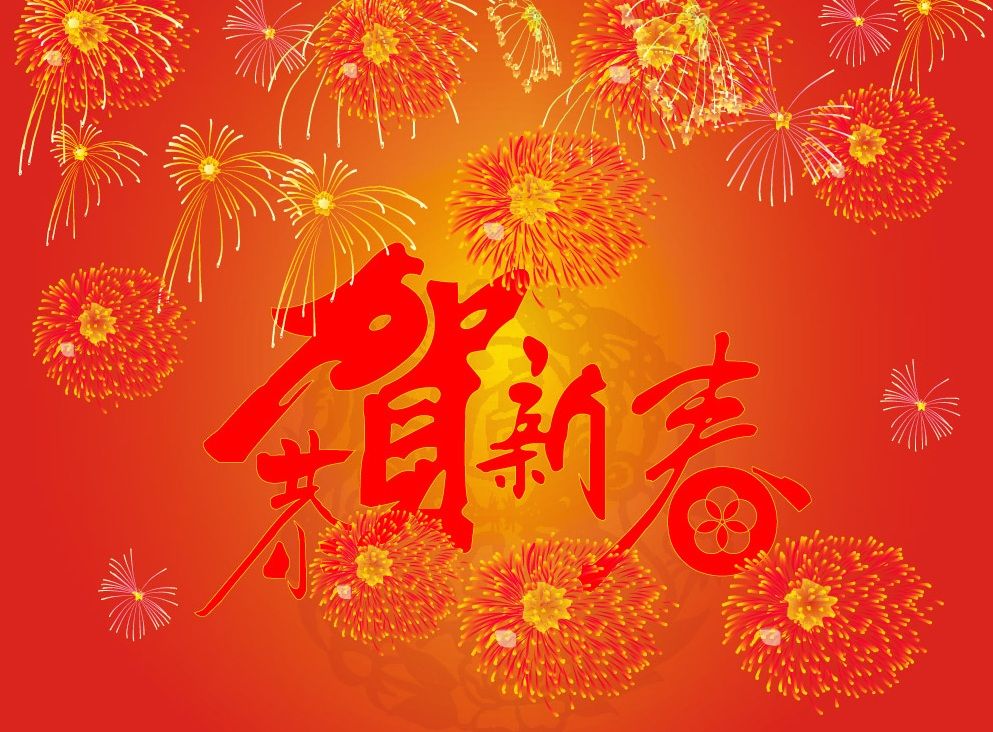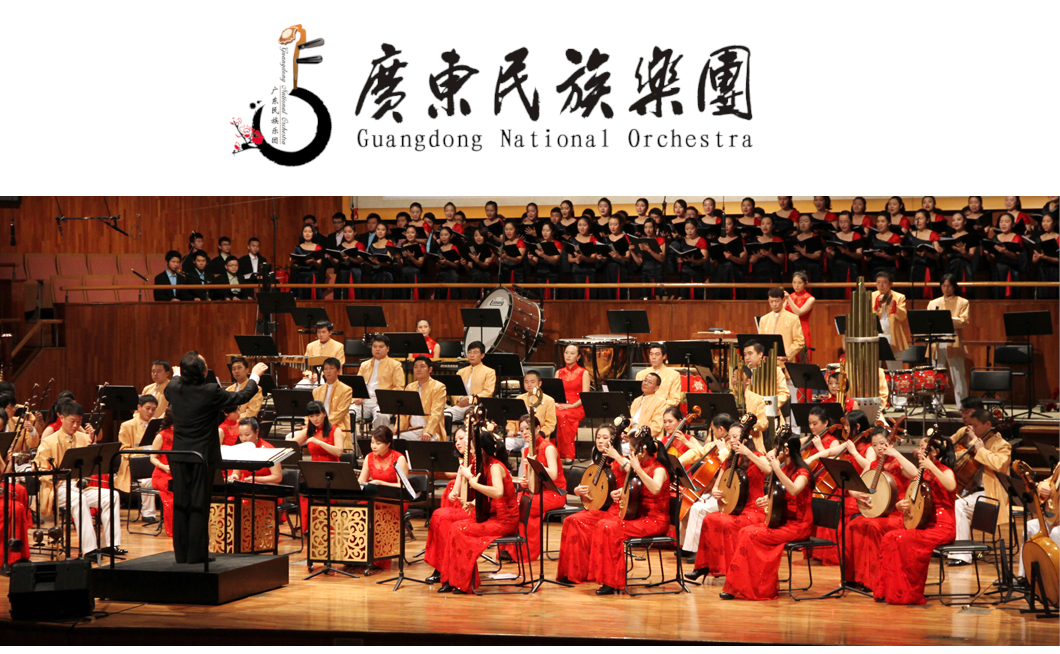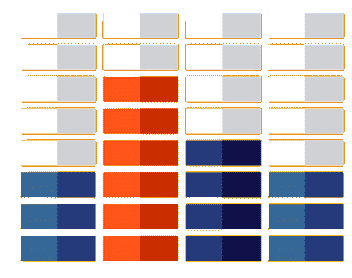
漢德百科全書 | 汉德百科全书
 民族音乐
民族音乐

拜年是我国民间每逢新春佳节必有的传统习俗,也是人人过年时候都要行的礼数,一般都是小辈儿跟着家长出门去谒见尊长、亲戚、朋友等,拜年过程中的礼仪可是很有讲究的。
拜年的顺序先搞懂
中国人春节拜年,大多遵循“由内及外、由近及远”的原则。初一拜本家;初二拜岳家、初三拜亲戚。
拜年行礼的方式
拜年的礼仪可是有大学问的。行礼的方式要根据行礼人的身份和受礼人的身份不同而变化,传统拜年礼仪大多分三种:
叩拜
过去未成年人给辈分较高的长辈拜年时,要行叩首大礼,现在在一些地区或者注重传统的家庭,还可能保留有这种礼节。
躬身作揖
俗称“吉拜”,行礼时双手抱拳前举,左手握右手,拱手齐眉,上下加重摇动几下。重礼可作揖后鞠躬。
拱手礼
多是平辈间的拜年,男女有别。标准的男子姿势是右手成拳,左手包住;女子右手在上,左手在下,但不抱拳,只压手。
拜年吉祥话用啥词
春节拜年吉祥话怎么说那可是相当重要!除了“新年快乐”、“恭喜发财”、“心想事成”、“万事如意”这些词,汉语文化博大精深,古人留下的又雅致又有韵味的吉祥话也不少,一些敬语谦辞在走亲访友时也可以视情况使用。
拜年作客礼仪
提前预约
找不到人当然就白跑一趟了,你拜访的人和你自己因为些原因没碰上面,大家都会觉得可惜,所以提前预约是很重要的。
拜年时间选择
向长辈拜年一般选择上午,过年期间大家都起得比较晚,所以要给对方留些时间,别太仓促。更不要等到下午开饭时间再去拜年,有些不太礼貌。
拜年礼品准备
根据拜年对象来选择礼品,比如看望老人,如果老人身体不太好,选择食品方面应该选择低糖或者无糖食品。如果实在不太了解被拜访者爱吃什么,选择水果、鲜花应该不会出错。
当然,烟酒类的选择更要根据拜访对象选择,如果被拜访者家中有孩子,记得也给孩子带点礼物。
拜年服装
不要穿的太随意,也不要穿的太正式,得体、大方、时尚更好。
餐桌礼仪
以长辈为主,谦让主座给长者。
拜年注意要点
1、过去一年有帮助过你的人,你一定要带些礼物,借拜年之机,表示谢枕。
2、去朋友家做客拜年时间不要太短,除留在家中吃饭外,一般以40分钟左右为宜,匆匆离去,会给人“缺少诚意”的感觉。
3、早晨,晚辈起床后,要先向长辈拜年,祝福长辈健康长寿、万事如意。
4、给家中长辈拜完年后,人们外出相遇时也要笑容满面地恭贺新年,互道“恭喜发财”、“四季如意”、“新年快乐”、“身体健康”等吉祥话语。

Guozhuo ist ein chinesischer tibetischer Volkstanz, der vor allem in Tibet sowie in tibetischen Siedlungen in Sichuan, Qinghai, Gansu und Yunnan beliebt ist.
昌都锅庄舞 西藏 民间舞蹈 西藏自治区 列入第一批国家级非物质文化遗产扩展名录 2006年
迪庆锅庄舞 迪庆 民间舞蹈 云南省迪庆藏族自治州 列入第一批国家级非物质文化遗产扩展名录 2006年
玉树卓舞 玉树藏族自治州 民间舞蹈 青海省玉树藏族自治州 列入第一批国家级非物质文化遗产扩展名录 2006年
锅庄舞 甘肃 民间舞蹈 甘南州 列入第一批国家级非物质文化遗产扩展名录 2006年
锅庄舞之乡 云南 民俗 香格里拉县 列入第一批国家级非物质文化遗产扩展名录 2006年

Errichtet wurde die Anlage im Jahre 223, während der Zeit der drei Reiche (三國 / 三国), als Holzkonstruktion. Im Laufe der Jahre wurde der Turm öfter durch Feuer, aber auch durch wechselnde Herrscher zerstört. Somit durchlief er unterschiedliche Stadien des Aussehens. Im Inneren des Turms findet man heute Holztafeln und Modelle, die die Geschichte und die Veränderungen mit der Zeit erläutern und zeigen.
Cui Hao (chin. 崔顥 / 崔颢 Pinyin Cuī Hào), ein gefeierter Dichter der Tang-Dynastie (唐朝), besuchte das Gebäude im frühen achten Jahrhundert. Sein Gedicht mit dem Namen „Huanghe-Turm“ machte den Turm zum bekanntesten Gebäude in Südchina.
Einem Gedicht des tangzeitlichen Literaten Li Taibo (701-62) verdankt der Turm der gelben Kraniche seinen Ruhm und die Tatsache, dass er nach dutzendfacher Zerstörung stets wieder neu errichtet wurde - zuletzt 1985. Das jetzt 51 m hohe Gebäude mit seinen fünf Stockwerken ist der imposanteste der »Drei großen Türme südlich des Yangzi« (die anderen stehen in Yueyang und Nanchang). Es befindet sich auf dem Schlangenberg (She Shan), gleich östlich der großen Yangzi-Brücke. Frühling und Winter tgl. 7.30-15.15 Uhr, Sommer und Herbst 7-18.30 Uhr, Eintritt 50 Yuan。
黄鹤楼位于中国湖北省武汉市武昌蛇山上,是江南四大名楼之一,中国国家旅游胜地四十佳之一。黄鹤楼共5层,高50.4米。始建于三国时代吴黄武二年(公元223年),距今已有1780多年历史,历代屡修屡毁,现在的黄鹤楼是于1985年重建的。
黄鶴楼(こうかくろう、簡体字: 黄鹤楼、拼音: )は、現在の中華人民共和国武漢市武昌区にかつて存在した楼閣。現在はほぼ同位置に再建された楼閣がある。武漢随一の名勝地であり、中国の『江南三大名楼』のひとつである。
李白の代表的な漢詩「黄鶴楼にて孟浩然の広陵に之くを送る」や崔顥の「黄鶴楼」にてその名を知られている。
三国時代の223年、呉の孫権によって軍事目的の物見櫓として建築されたが、後には主に観光目的の楼閣になった。唐の永泰元年(765年)に書かれた閻伯瑾「黄鶴楼記」に楼閣の盛大な様子を記している[1]。
黄鶴楼は幾度も焼失と再建が繰り返された。清の光緒10年(1884年)の火事で失われた後、1904年に湖北巡撫の端方の命令により黄鶴楼の旧蹟地に建てられた2階建ての西洋式の火の見櫓と1907年に張之洞の門生らに建てられた「奥略楼」があったが、両方とも1955年に武漢長江大橋の建設のために取り壊された[2]。
黄鶴楼には、以下のような伝承が残っている。
昔、辛氏という人の酒屋があった。そこにみすぼらしい身なりをした仙人がやってきて、酒を飲ませて欲しいという。辛氏は嫌な顔一つせず、ただで酒を飲ませ、それが半年くらい続いた。 ある日、道士は辛氏に向かって「酒代が溜まっているが、金がない」と言い、代わりに店の壁にみかんの皮で黄色い鶴を描き、去っていった。 客が手拍子を打ち歌うと、それに合わせて壁の鶴が舞った。そのことが評判となって店が繁盛し、辛氏は巨万の富を築いた。
その後、再び店に仙人が現れ、笛を吹くと黄色い鶴が壁を抜け出してきた。仙人はその背にまたがり、白雲に乗って飛び去った。
辛氏はこれを記念して楼閣を築き、黄鶴楼と名付けたという。
Yellow Crane Tower (traditional Chinese: 黃鶴樓; simplified Chinese: 黄鹤楼; pinyin: Huánghè Lóu) is a traditional Chinese tower located in Yellow Crane Tower Subdistrict, Wuchang District, Wuhan, in central China. The current structure was built in 1981, but the tower has existed in various forms since not later than AD 223. The current Yellow Crane Tower is 51.4 m (169 ft) high and covers an area of 3,219 m2 (34,650 sq ft). It situated on Snake Hill (蛇山), one kilometer away from the original site, on the banks of the Yangtze River in Wuchang District.The Yuanhe Maps and Records of Prefectures and Counties, written almost 600 years after the construction of the tower, notes that after Sun Quan, founder of the kingdom of Eastern Wu, built the fort of Xiakou in 223, a tower was constructed at/on the Yellow Crane Jetty, west of Xiakou, and hence its name.[1][2]
The tower has been destroyed twelve times, both by warfare and by fire, in the Ming and Qing dynasties and was repaired on ten separate occasions. The last tower at the original site was built in 1868 and destroyed in 1884. In 1957, the Wuhan Yangtze River Bridge was built with one trestle of the bridge on the Yellow Crane Tower's site. In 1981, the Wuhan City Government commenced reconstruction of the tower at a new location, about 1 km (0.62 mi) from the original site, and it was completed in 1985.[3]
On January 31, 2018, Theresa May, Prime Minister of the United Kingdom, visited Wuhan and took pictures at the Yellow Crane Tower.[4]
La tour de la Grue jaune (Chinois: 黄鹤楼; Pinyin: Huánghè lóu), ou pavillon de la Grue jaune, est un bâtiment de grande importance pour l'histoire de l'art chinois, édifié à Wuhan, province de Hubei, dans la république populaire de Chine. Son plus haut balcon offre une belle vue du fleuve Yangtze à l'Ouest. À l'Est de la colline on peut également, pour quelques yuans, faire sonner la grande cloche du temple.
Elle est située sur Shéshān (蛇山, « Colline du serpent »), la tour a été détruite de nombreuses fois au cours de ces presque 2000 ans d'histoire et reconstruite de formes différents à chaque époque. La construction actuelle date de 1985 tente de conserver le style architectural des anciennes versions mais la structure est faite de matériaux modernes et possède un ascenseur.
Le premier bâtiment a été construit en 223, au cours de la période des Trois Royaumes, en bois. Au fil des années, la tour a été plusieurs fois détruite, souvent par le feu. Par conséquent, maintenant, à l'intérieur de la tour, à peu-près seules les tables sont en bois.
La Pagoda della Gru Gialla (cinese tradizionale: 黃鶴樓; cinese semplificato: 黄鹤楼; pinyin: Huáng Hè Lóu; letteralmente: "Torre della Gru Gialla") è un edificio di grande significato per la storia dell'arte, che sorge a Wǔhàn, nella provincia di Hubei, nella Repubblica popolare cinese. La pagoda si trova sul Monte Sheshan (conosciuto come la Collina del Serpente), al centro del quartiere di Wuchang e quindi vicino al Chang Jiang. Questa montagna si eleva sensibilmente al di sopra della città, per cui dalla Pagoda della Gru si ha una vista meravigliosa. La pagoda è una ricostruzione di un antico monumento di 1700 anni fa che fu elevato per ricordare la visita di un immortale che salì la collina in sella ad una gru gialla. Da qui il nome "Rupe della Gru Gialla".
La costruzione fu eretta nel 223, durante il Periodo dei Tre Regni (三國), come edificio in legno. Nel corso degli anni la torre fu distrutta sia dal fuoco,sia dai vari proprietari. Di conseguenza il suo aspetto attraversò diverse fasi. All'interno della torre si trovano oggi tavole e modelli di legno, che spiegano la storia ed i cambiamenti che ha subito nel corso del tempo.
Cuī Hào (崔颢), un celebre poeta della Dinastia Tang (唐朝), visitò la struttura agli inizi dell'VIII secolo. La sua poesia dal titolo "La Torre di Huanghe" rese la torre l'edificio più famoso della Cina meridionale.
La Torre de la Grulla Amarilla (en chino: 黄鹤楼, pinyin: Huáng Hè Lóu) es una torre histórica, construida originalmente en el 223 d. C. La estructura actual, sin embargo, fue reconstruida en 1981 a un kilómetro de distancia de su emplazamiento original, y tiene poco parecido con la Torre de la Grulla Amarilla original. Se sitúa en Sheshan (Colina de la Serpiente), en la orilla del río Yangtsé en Wuchang, Wuhan, en la provincia de Hubei, China.
El emplazamiento original de la torre era el Embarcadero de la Grulla Amarilla, al oeste de Xiakou. Los Mapas y Registros de Prefecturas y Condados de la época Yuanhe señala que cuando Sun Quan construyó el fuerte de Xiakou, había una torre que llevaba el nombre del Embarcadero.
Las guerras y los incendios destruyeron la torre muchas veces. Solo durante las dinastías Ming y Qing, la torre fue destruida siete veces, y fue reconstruida y reparada diez veces. La última vez que se construyó durante la dinastía Qing fue en 1868, y fue destruida en 1884. Su emplazamiento fue ocupado posteriormente por los bastidores del Puente de Wuhan sobre el río Yangtsé en 1957. En 1981, el gobierno de la ciudad de Wuhan decidió reconstruir la torre en una nueva localización, a un kilómetro de su emplazamiento original. La torre actual se completó en 1985.

Maqam, arabisch مقام, DMG maqām ‚Standort‘, wörtl. „Ort, auf dem etwas errichtet ist“,[1] Plural Maqamen, Maqame, arabischer Plural Maqamat (مقامات, DMG maqāmāt), davon abgeleitet türkisch makam, Plural makamlar, ist die in der arabischen und türkischen, aber auch in der persischen Kunstmusik[2] benutzte Bezeichnung für den Modus eines Musikstückes.
木卡姆(阿拉伯语:مقام;英文maqam)是一种音乐调式,广泛流传于中亚地区,在各地有不同的变化。在中国,木卡姆通常指的是新疆地区的维吾尔木卡姆。维吾尔木卡姆是维吾尔诗歌的音乐表达形式,共有十二套大曲,故又称十二木卡姆。
十二套分别為:拉克Rak、且比亚特Čäbbiyat、斯尕Segah、恰尔尕Čahargah、潘尔尕Pänjigah、乌孜哈勒Özhal、艾且Äjäm、乌夏克Uššaq、巴雅提Bayat、纳瓦Nava、木夏吾莱克Mušavräk、依拉克Iraq。
マカーム(maqām, مقام。複数形はマカーマート maqāmāt)はアラビア語で「留まるところ」を意味し、「場所」「壇」「地位」などの意味で使われる普通名詞だが、中近東の音楽では特に音楽理論用語として使われ、「旋法の体系、システム」を意味する語である。
Arabic maqam (Arabic: مقام, romanized: maqām, literally "rank"; pl. مقامات maqāmāt) is the system of melodic modes used in traditional Arabic music, which is mainly melodic. The word maqam in Arabic means place, location or position. The Arabic maqam is a melody type. It is "a technique of improvisation" that defines the pitches, patterns, and development of a piece of music and which is "unique to Arabian art music".[1] There are seventy two heptatonic tone rows or scales of maqamat.[1] These are constructed from major, neutral, and minor seconds.[1] Each maqam is built on a scale, and carries a tradition that defines its habitual phrases, important notes, melodic development and modulation. Both compositions and improvisations in traditional Arabic music are based on the maqam system. Maqamat can be realized with either vocal or instrumental music, and do not include a rhythmic component.
An essential factor in performance is that each maqam describes the "tonal-spatial factor" or set of musical notes and the relationships between them, including traditional patterns and development of melody, while the "rhythmic-temporal component" is "subjected to no definite organization".[2] A maqam does not have an "established, regularly recurring bar scheme nor an unchanging meter. A certain rhythm does sometimes identify the style of a performer, but this is dependent upon their performance technique and is never characteristic of the maqam as such."[2] The compositional or rather precompositional aspect of the maqam is the tonal-spatial organization including the number of tone levels and the improvisational aspect is the construction of the rhythmic-temporal scheme.[2]
Le maqâm (arabe : مقام) — en turc makam, en azéri mougham, en ouzbek maqôm, en ouïghour mouqâm — est à la fois un système musical général et ses applications particulières.
Le mot maqâm signifiait le lieu où se jouait la musique ; par la suite, il désigna la modalité au Machrek. Maqâm signifie littéralement « station », d'une échelle mélodique en l'occurrence. Il a aussi le sens de « rang élevé » et désigne un modèle transcendant1.
Avant l'adoption du terme maqâm, on utilisait dans les régions arabophones diverses appellations : saout (صوت) qui veut dire voix ou son, naghma (نغمة) qui veut dire mélodie ou tab'e (طبع) qui veut dire "nature" dans le sens de caractère. Comme pour les râgas dans la musique indienne, les maqâmât sont associés aux 4 éléments, au jour et à la nuit et avaient chacun un caractère.
Il s'agit d'une organisation des échelles mélodiques2. À la différence du système des « gammes » (majeures, mineures...) telles qu'on les conçoit et les utilise en Occident, le maqâm est plus qu'un système d'intervalles ; il organise les intervalles entre chaque note ainsi que les cheminements à l'intérieur de cette « échelle » modale, et ce sur plusieurs octaves, généralement deux. Sur ce point, le maqâm se rapproche beaucoup du système des râgas dans la musique classique indienne.
S'il est virtuellement possible d'imaginer une infinité de déclinaisons sur ce principe, notamment en combinant les maqâmât entre eux pour créer des « sous-maqâmât », quelques dizaines seulement sont couramment utilisées et ont acquis une véritable légitimité. Il s'agit là du deuxième sens du maqâm, qui correspond à la définition d'intervalles et de parcours mélodiques singuliers, obéissant à des règles mathématiques et esthétiques. Nous pouvons alors désigner chaque système d'intervalles et de parcours par un nom qui lui est propre et s'y réfère : Hijaz, Husseinî, Bayati...
De nombreux maqâms possèdent des intervalles avoisinant le 3/4 de ton, à la différence des échelles occidentales « tempérées » (où les divisions sont également espacées sur la base de 12 intervalles par octave). Concrètement, cela reviendrait à définir un intervalle supplémentaire entre le si et le do par exemple, en plaçant une nouvelle note : le si ouj. Nous pourrions alors jouer cet intervalle (et cette note) et obtenir une « couleur » particulière correspondant à l'une de grandes « familles » de maqâm.
Il maqam arabo (in arabo: مقام, maqām, letteralmente "luogo"; plurale مقامات tradotto: maqāmāt) è il sistema di modalità melodiche utilizzato nella musica araba tradizionale, che è principalmente melodica. La parola maqam in arabo significa luogo, collocazione o posizione. Il maqam arabo è un tipo di melodia. È "una tecnica di improvvisazione" che definisce i toni, i modelli e lo sviluppo di un brano musicale e che è "unico per la musica araba".[1] Ci sono settantadue righe di toni eptatonici o scale di maqamat.[1] Questi sono costruiti da secondi maggiori, neutri e minori. Ogni maqam è costruito su una scala e porta una tradizione che definisce le sue frasi abituali, le note importanti, lo sviluppo melodico e la modulazione. Sia le composizioni che le improvvisazioni nella musica araba tradizionale si basano sul sistema maqam. I maqamat possono essere realizzati con musica vocale o strumentale e non prevede una componente ritmica.
Un fattore essenziale nell'esecuzione è che ogni maqam descrive il "fattore tonale-spaziale" o insieme di note musicali e le relazioni tra di esse, compresi i modelli tradizionali e lo sviluppo della melodia, mentre la "componente ritmico-temporale" non è soggetta a nessuna organizzazione definita".[2] Un maqam non ha "uno schema di battute stabilito e periodicamente ricorrente né un metro immutabile. Un certo ritmo a volte identifica lo stile di un artista, ma questo dipende dalla sua tecnica di esecuzione e non è mai una caratteristica del maqam in quanto tale".[2] L'aspetto compositivo o piuttosto precomposizionale del maqam è l'organizzazione tonale-spaziale che comprende il numero di livelli di tono e l'aspetto improvvisativo è la costruzione dello schema ritmico-temporale.[2]
El maqam arábico (en árabe: maqām, مقام; -- pl. maqāmāt مقامات o maqams; en español: rango) es el sistema de modos melódicos usado en la música árabe tradicional.
El maqam arábico es un tipo de melodía y una herramienta de improvisación que define alturas, patrones y desarrollo de una pieza de música, los cuales serán únicos a la "música culta" árabe.
Мака́м (араб. مقام, транслит. maqām, букв. стоянка, место стоянки, мн. ч. араб. مقامات транслит. maqāmāt; тюрк. makam, мн. ч. makamlar) — в арабской и турецкой традиционной (профессиональной) музыке многозначный термин, обозначающий (1) ладовый звукоряд, (2) модально-монодический лад в совокупности всех его категорий и функций, (3) целостную текстомузыкальную композицию, включающую не только конкретные приёмы техники композиции (центонизацию, орнаментальное варьирование, импровизацию, ритмическое варьирование и т. д.), но также коннотации музыкального жанра.
 春节
春节
 舞蹈
舞蹈


 音乐
音乐

 历史
历史

 音乐排行榜
音乐排行榜
 假期和旅游
假期和旅游

 建筑艺术
建筑艺术
 往日岁月
往日岁月


 蒙古
蒙古






 文化遗产
文化遗产